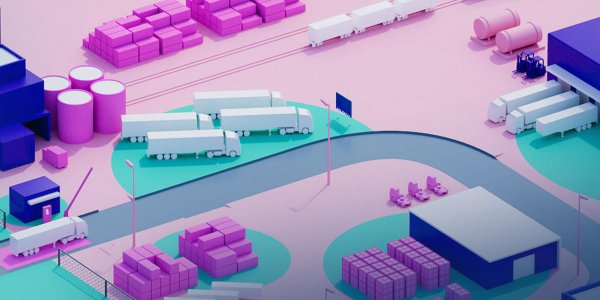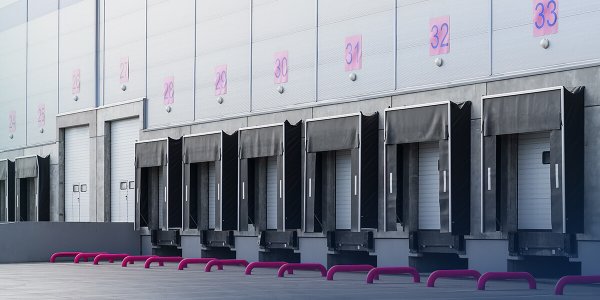Everyone talks about Supply Chain Management – but what does SCM really mean in 2026? Gone are the days when SCM was merely about material flows and delivery dates. Today, it’s the heartbeat of modern industrial enterprises: data-driven, connected, and key to competitiveness. Those who master their supply chain not only keep an overview but steer proactively instead of reacting.
What Does SCM Supply Chain Management Actually Mean?
SCM stands for Supply Chain Management – the holistic control of all processes from raw material procurement through production, storage, and transport to final delivery to the customer. Unlike traditional logistics, SCM looks at the entire value chain, not just individual sections.
The goal: to connect all stakeholders – suppliers, manufacturers, logistics providers, and customers – into a continuous flow of data and processes. This creates an integrated network built on efficiency, transparency, and collaboration.
The key difference from logistics lies in perspective: while logistics focuses on transport and warehousing, SCM takes a strategic, analytical, and network-oriented approach.
Why Modern SCM Is the Key to Competitiveness
Global markets, volatile raw material prices, geopolitical tensions, and rising customer expectations all demand agility and precision. Companies that still operate with outdated systems or data silos quickly lose ground.
A strong SCM Supply Chain Management system provides the foundation for control and efficiency. Real-time data from transport, warehousing, and production enable better decision-making. Disruptions can be identified early, bottlenecks avoided, and costs optimized. SCM becomes a strategic success factor – not only for global corporations but especially for industrial SMEs.
Key Trends in SCM
1. Cloud-Based SCM Systems
Flexibility and speed are crucial today. Cloud-based solutions allow processes to be rolled out quickly, centralize data, and make information globally accessible. Platforms like myleo / dsc focus on Process-as-a-Service – modular, scalable SCM components that integrate seamlessly.
2. Artificial Intelligence & Predictive Analytics
AI detects patterns in vast data sets and predicts bottlenecks, lead times, or demand fluctuations – allowing planners to act proactively rather than reactively.
3. IoT & Real-Time Tracking
Sensors and tracking solutions deliver live data from trucks, warehouses, and yards. Transparency ensures decisions are based on facts, not assumptions.
4. Sustainability & Green SCM
Companies face growing pressure to reduce CO₂ emissions and create sustainable supply chains. Green SCM combines efficiency with environmental responsibility – through optimized routing, fewer empty runs, and eco-friendly packaging.
5. Collaboration & Data Sharing
Modern supply chains thrive on shared data. Collaborative platforms foster trust and enable real-time planning across partners – a true paradigm shift in logistics.
Challenges in Implementation
Of course, there are obstacles. Many companies struggle with fragmented IT landscapes: ERP here, WMS there, TMS somewhere else – and Excel in between. These isolated systems hinder information flow.
Then there’s the human factor: change management is critical. SCM requires a mindset shift – from departmental silos to end-to-end thinking. Transparency can cause unease when processes become measurable, so clear communication and phased rollouts are key.
The skills gap also matters: SCM is tech-heavy and data-centric. New tools require new expertise – making knowledge management and training essential.
How Technology Platforms Like myleo / dsc Support Modern SCM
This is where technology makes the difference. myleo / dsc connects all parts of the supply chain in one platform. From transport allocation to yard management and real-time communication via status alerts, document transfer and commentary features, it creates a seamless data flow.
Instead of maintaining isolated systems, processes become integrated. ETA data, dock scheduling, and material flows are visible in one place. Companies gain real-time transparency and can replan at the push of a button when conditions change.
Cloud and SaaS architectures make this scalable and quick to implement – a true gamechanger for mid-sized companies that want digital transformation without massive IT projects.
Outlook – The Future of SCM
SCM is evolving – from linear chains to interconnected supply networks. AI, IoT, and automation are merging closer than ever. Companies that embrace data transparency and cloud technologies today lay the groundwork for Supply Chain Management 2027 and beyond.
The future belongs to adaptive, resilient supply chains: systems that not only respond but anticipate. This is the power of modern SCM – making businesses stronger, more flexible, and data-driven.
Conclusion: No Success Without SCM in 2026
SCM Supply Chain Management is no longer a buzzword – it’s the foundation of competitiveness. It combines strategy, technology, and people into an agile ecosystem that can handle uncertainty. Companies that digitize, connect, and visualize their supply chains don’t just save costs – they gain control.

